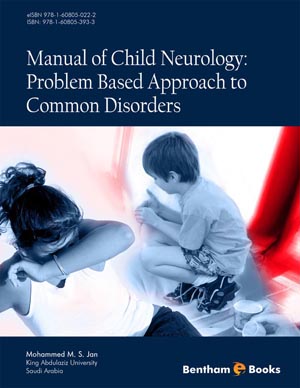Abstract
Movement disorders are relatively common in the pediatric neurology practice. Describing and reading about the characteristics of these movements does not substitute the need to observe them in practice. Once the physician see such movements, recognition becomes easier. All movement disorders are abnormal and involuntary. Most of them disappear in sleep except palatal myoclonus, which is due to a lesion in the central tegmental tract. Identifying abnormal movements depends on their characteristics including whether they are slow or fast, rhythmic or arrhythmic, intermittent or continuous, present at rest or action, and distributed proximally or distally. In this chapter, important movement disorders will be discussed depending on the clinical features rather than the specific disease.
Keywords: Movement disorders, Dyskinesia, Chorea, Athetosis, Tremor, Tics, Dystonia, Myoclonus, Cerebral Palsy, Degenerative, Metabolic.






















